
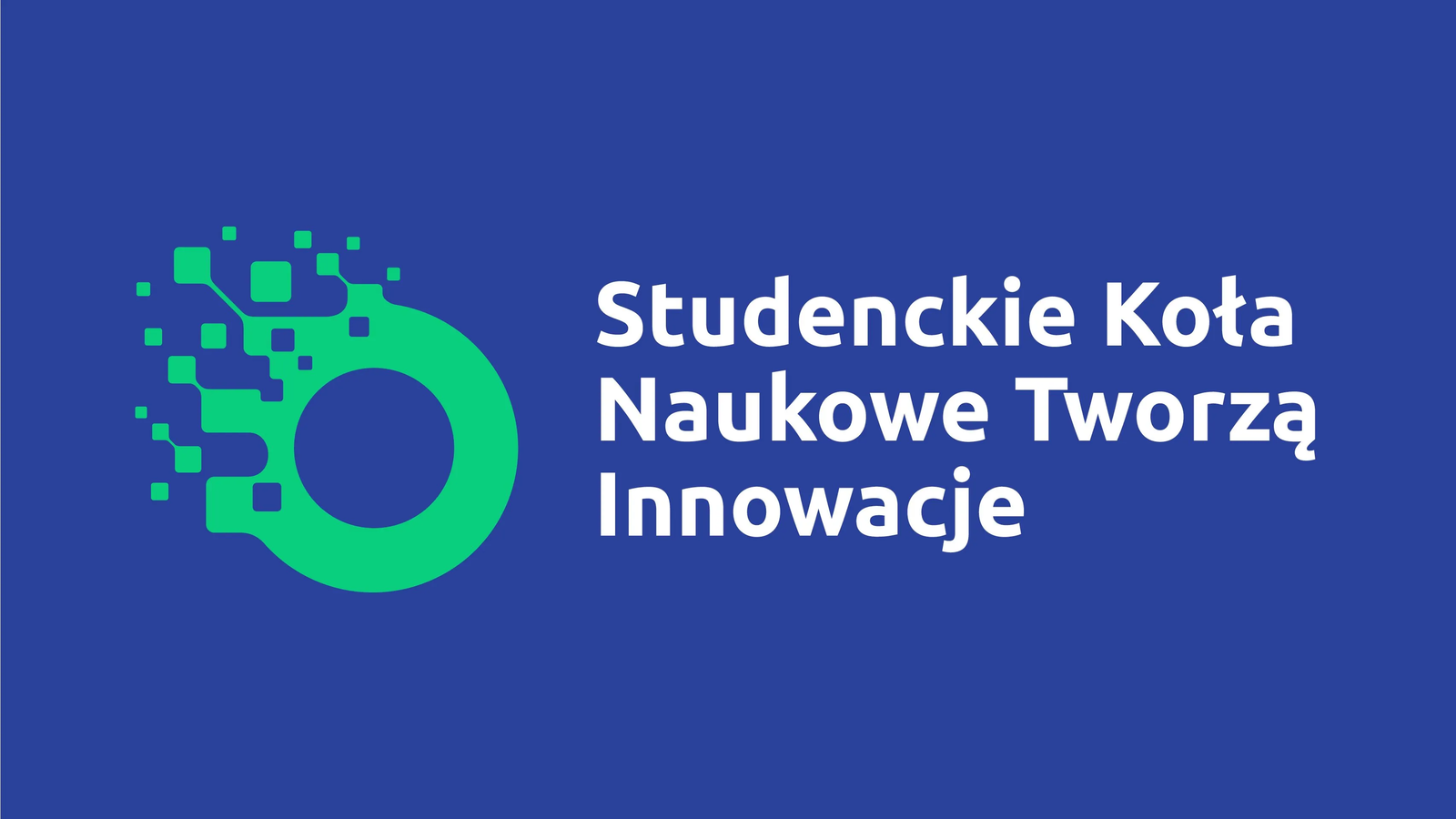
Project Number: SKN/SP/601084/2024
Project implemented as part of the "Student science clubs create innovation" financed by the Ministry of Science and Higher Education
Title of the project: Curcumin as a natural substitute for diols in the synthesis of innovative polyurethane materials modified with polymethacrylates for use as functional coatings
Principal Investigator: Prof. Paweł Chmielarz, Eng, PhD, DSc, ProfTit
Project Value: 69 844,00 PLN
Financing with resources of Ministry of Science and Higher Education, Poland
Aim of the Project:
The project's main objective is to develop a methodology for synthesizing innovative, functional urethane-methacrylic copolymers using a non-toxic chemical compound of natural origin - curcumin, which will replace diols from non-renewable sources. Atom transfer radical polymerization technique will be used, in which a chemical reducing agent acts as a supplemental activator (SARA ATRP). The central premise of the project revolves around exploring curcumin as a photocatalyst in photoinduced ATRP (photo-ATRP). The project focuses on developing synthesis procedures using the principles of green chemistry and sustainable development. As part of these procedures, it is planned to use an environmentally friendly spice - curcumin, as a substrate for the synthesis of urethane-isocyanate prepolymer, and to use the minimum concentration of the catalytic complex in ATRP. Due to the complexity and extensiveness of the project, it includes several stages detailed in the schedule. Obtaining specialized properties of new polymer materials is crucial because it will enable the development of innovative polymer technologies with huge potential for applications in various fields, from the glue and paint industry, even to the medical industry.
![]()
![]()
Project Number: UMO-2023/50/O/ST5/00104
Project implemented as part of the PRELUDIUM BIS 5 programme
Title of the project: Carbon quantum dots in the synthesis of functional polymeric materials using photoinduced atom transfer radical polymerization techniques
Project Promoter: Rzeszow University of Technology
Principal Investigator: Prof. Paweł Chmielarz, Eng, PhD, DSc, ProfTit
Project Value: 688 080,00 PLN
Financing with resources of National Science Centre, Poland
Aim of the Project:
The project's primary aim is to establish an economically viable and environmentally friendly approach that harnesses the potential of Carbon Quantum Dots (CQDs) as photocatalysts in the synthesis of functional polymers through atom transfer radical polymerization (ATRP). Distinguished by their unique attributes, including adjustable luminescence, chemical and optical stability, biocompatibility, and non-toxicity, CQDs stand apart from conventional heavy-metal semiconductor nanoparticles commonly used in photopolymerization. Given the demand for an exceptionally efficient photocatalyst within ATRP concepts, exploring the efficacy of CQDs is imperative, given their potential to serve as a cost-effective and universally applicable photocatalyst for the production of diverse polymers. This is especially crucial as prevailing photocatalysts and photosensitizers in ATRP often lack sustainable pathways, underscoring the need for more environmentally conscious alternatives.
Thus, the fundamental principle underlying this project is the preparation of functional polymers through atom transfer radical polymerization (ATRP), employing CQDs as photocatalysts, and after functionalization, utilizing them as a photocatalyst and ATRP macroinitiator for the generation of branched macromolecules with a centrally located CQDs and side chains of polymers. Functional monomers will undergo polymerization, yielding graft polymer chains with varying compositions, spanning linear (co)polymers to macromolecules boasting branched architectures. This comprehensive exploration will encompass property testing, including cytotoxicity, evaluations and analysis of drug-release profiles, characterized by pH-responsiveness and thermoresponsiveness. The ultimate goal is to determine the feasibility of deploying these materials within in intelligent drug delivery systems that facilitate ongoing drug tracking within the body, as well as for cell bioimaging.
Structured around four primary tasks, the project will initiate with an assessment of CQD photocatalyst performance in photoinduced ATRP. This will be succeeded by optimizing the polymerization process for a wide array of monomers, such as acrylates, methacrylates, and acrylamides. Additionally, the mechanism governing their performance will be explored within the framework of metal-free ATRP. Further phases of research encompass the functionalization of reactive groups on the CQD surface, elucidating the altered structure, and a comprehensive analysis of the fluorescence characteristics of modified carbon quantum dots. Moreover, there are plans to synthesize polymers featuring a branched architecture, with integrated CQD cores. This overarching refinement aims to formulate an economical pathway for fabricating functional agents intended for drug delivery. Simultaneously, it seeks to develop promising materials with potential applicability in cell imaging for cancer therapy.
The successful realization of this project will yield insights into the mechanisms underlying photocatalysis involving CQDs within ATRP contexts, both with and without metal catalyst involvement. This endeavor will result in a diverse collection of functional polymeric materials, enhancing or bestowing new attributes upon CQDs.
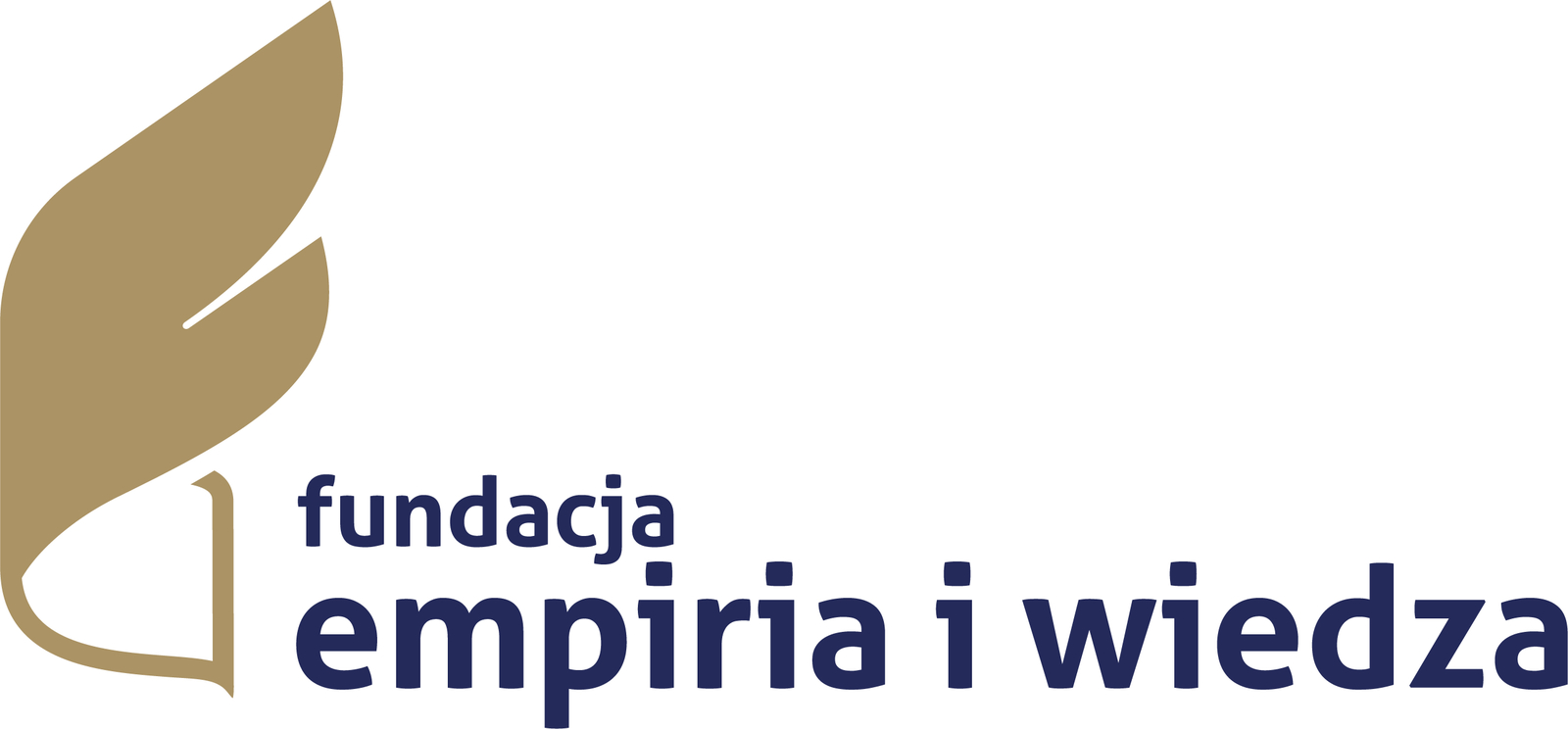
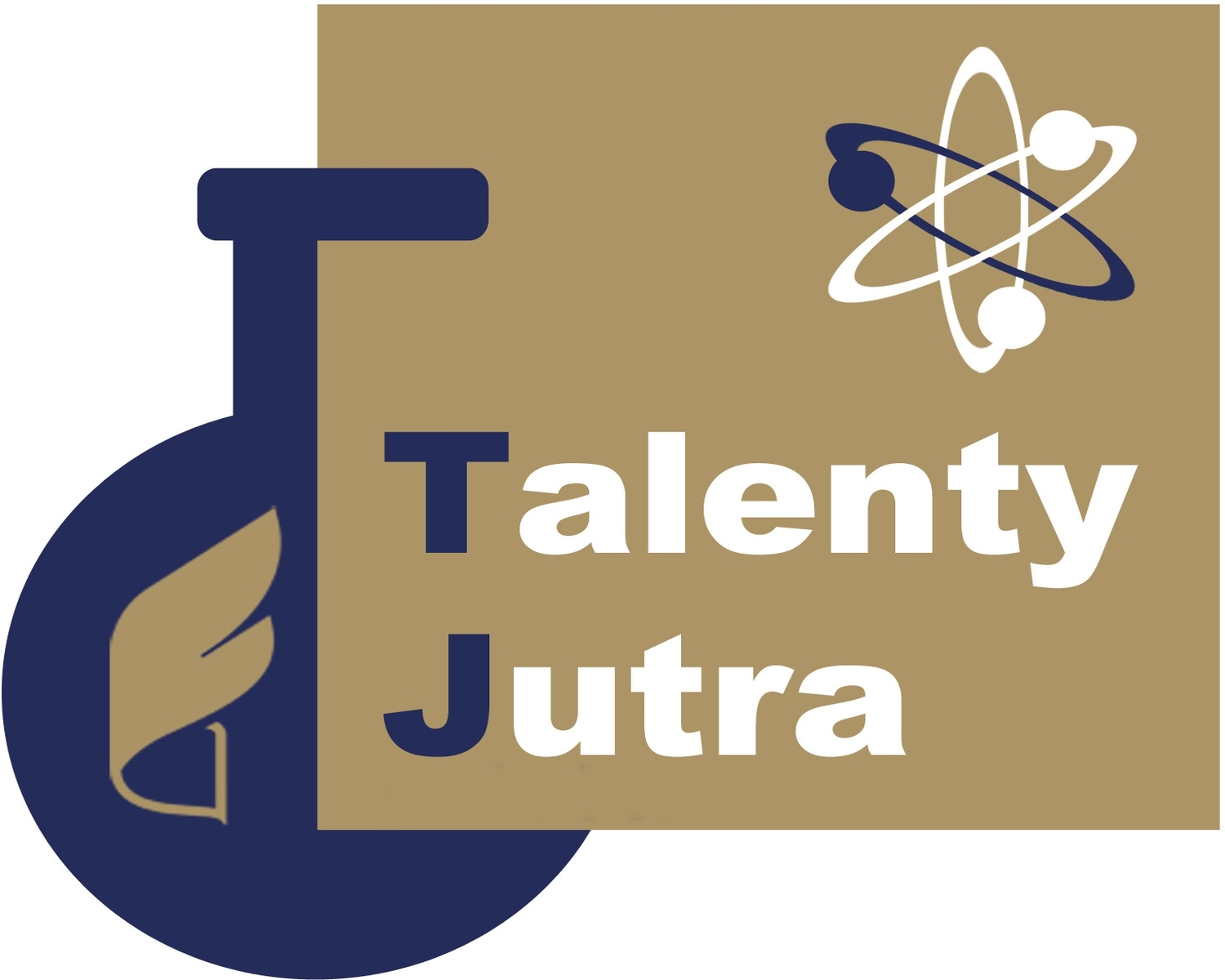
Project Number: 6/TJ_2/2023
Project implemented as part of the „Talenty Jutra” financed by Fundacja Empiria i Wiedza and Bank Gospodarstwa Krajowego.
Tytuł projektu: Polymer nanocomposites with complex structures as scaffolds for bone growth and carriers in topical drug delivery
Principal Investigator: Kinga Ślusarczyk, Eng
Principal Supervisor: Prof. Paweł Chmielarz, Eng, PhD, DSc, ProfTit
Project Value: 25 000,00 PLN net
Time of realization: 01.01.2024-30.11.2024
Project financed with resources of Fundacja Empiria i Wiedza and Bank Gospodarstwa Krajowego
Aim of the Project:
The aim of the research will be to verify osteoblast proliferation on hybrid materials composed of polyetheretherketone (PEEK), a layer of bottled polymer brushes containing hydroxyl or amine functional groups, and a mineral layer of hydroxyapatite (HA), produced by biomineralization. An additional novel aspect of the presented project, which distinguishes it from previous work, is the concept of using poly(2-(dimethylamino)ethyl methacrylate) (PDMAEMA) brushes attached to the PEEK surface, with a bottle-like structure and the character of a weak electrolyte, for local delivery of the drugs quercetin and lowastatin, active substances that reduce inflammation at the implantation site and accelerate the bone regeneration process.

Project Number: 0058/L-14/2023
The project is implemented under the LIDER XIV program financed by the National Center for Research and Development
Title of the project: Synthesis of precisely defined branched polymers with a sucrose core for modified drug release
Principal Investigator: Dr. Izabela Zaborniak, Eng, PhD
RDRP Expert: Prof. Paweł Chmielarz, Eng, PhD, DSc, ProfTit
Project Value: 1 700 635.00 PLN
Aim of the Project:
The project aims to synthesize precisely defined branched polymers consisting of a sucrose core and eight polymeric side arms constructed from copolymers belonging to the acrylate group. These copolymers include both ionic monomers containing cationic and anionic side chains, as well as non-ionic ones. For this purpose, the atom transfer radical polymerization (ATRP) method will be applied because this group of techniques allows for designing polymers with a well-defined structure, providing the possibility of precisely modulating the release of active substances depending on the composition and length of the polymer arms.
The synthesized polymers will be examined for their applications as auxiliary substances for modified drug release, in collaboration with a pharmaceutical company, where developmental studies will be conducted as a stage in preparing the products obtained within the project for market implementation. The presence of ionic monomers in the side chains of the polymers determines the mechanism of active substance release in specific segments of the digestive system. On the other hand, the use of non-ionic polymers affects the physicochemical properties of the final form of the polymer material, increases the bio-compatibility of the polymer, and modulates its solubility.
The mentioned project is a response to the pharmaceutical market's demand for auxiliary chemical substances that enhance therapeutic effects. Currently, this goal is achieved through changes in the method of administering medicinal substances, so the drug form technology serves as an excellent tool for optimizing pharmacotherapy based on already-existing active substances in the market.


Project Number: SKN/SP/569572/2023
Project implemented as part of the "Student science clubs create innovation" financed by the Ministry of Science and Education
Title of the project: Modification of natural plant-derived textile materials by ATRP techniques
Principal Investigator: Prof. Paweł Chmielarz, Eng, PhD, DSc, ProfTit
Project Value: 69 917,00 PLN
Financing with resources of Ministry of Education and Science, Poland
Aim of the Project:
The main objective of the project is to develop a methodology for modifying plant-derived textile materials in order to obtain innovative and functional textiles grafted with polymers, using surface-initiated atom transfer radical polymerization method with the regeneration of activators by electron transfer from a chemical reducing agent (SI-ARGET ATRP). The project focuses on the development of synthesis procedures using an environmentally friendly reducing agent in the form of ascorbic acid and the use of a minimum concentration of the catalytic complex. Optimization of concentrations and molar ratios of reagents, as well as the selection of an appropriate functionalization path will allow obtaining textile materials with predefined properties, i.e. superhydrophobicity, antibacterial properties, and reduced flammability of textile materials.


Project Number: 18/TALENTYJUTRA_E1/2022
Project implemented as part of the „Talenty Jutra” financed by Fundacja Empiria i Wiedza and Bank Gospodarstwa Krajowego.
Tytuł projektu: Development of an innovative and biocompatible bone implant precursor using atom transfer radical polymerization techniques
Principal Investigator: Kinga Ślusarczyk, Eng
Principal Supervisor: Prof. Paweł Chmielarz, Eng, PhD, DSc, ProfTit
Project Value: 25 000,00 PLN net
Time of realization: 01.03.2023-31.12.2023
Project financed with resources of Fundacja Empiria i Wiedza and Bank Gospodarstwa Krajowego
Aim of the Project:
The main objective of the project is development of method to obtain an innovative and biocompatible bone implant precursor by modifying the surface of polyetheretherketone (PEEK) by surface-initiated atom transfer radical polymerization (SI-ATRP). The synthesis of brushes charaterized by bottlebrush structure and polyelectrolyte properties, consisting of a poly(2-hydroxyethyl methacrylate) core and fragments of poly(2-(dimethylamino)ethyl methacrylate) and poly(acrylic acid), will enable the surface transformation from hydrophobic to hydrophilic and thus improve the biocompatibility of the material. On the other hand, the unique structure of bottlebrushes and high density of carboxyl and amino groups, which accelerate the rate of the formation of hydroxyapatite – one of the main components of the bone matrix – will reduce the time of the biomineralization, required for the implant to adhere to bone tissue.
![]()
![]()
Project Number: UMO-2016/22/E/NZ7/00641
Project implemented under the SONATA BIS 6 program
Project title: Nanoparticle antioxidants: biological foundations for potential targeted therapy of neurodegenerative diseases.
Project Promoter: University of Rzeszów
Principal Investigator: Prof. Izabela Anna Sadowska-Bartosz, PhD, DSc, ProfTit
Project Value: 1 668 800,00 PLN
Time of realization: 27.03.2017 – 30.09.2022 (PRz involvement: 21.03.2022 – 30.09.2022)
Project financed by Polish National Science Centre (NCN)
Aim of the Project:
The aim of the project is: (i) synthesis of nano-antioxidants containing nitroxyl free radicals, (ii) analysis of their penetration into cells, (iii) assessment of their toxicity to cells (iv) effectiveness in alleviating oxidative (OS)/nitrative (NS) stress and its effects. The main goal of the project is to test the cytotoxicity and efficacy of two selected covalently bonded nitroxides (NZN) in ameliorating the pathological effects of alterations in animal models of Alzheimer's disease (AD) and Parkinson's disease (PD). The project also aims to analyze in detail the mechanism of involvement of NZN in anti-degenerative protection of nerve cells.


Project Number: SKN/SP/534777/2022
Project implemented as part of the "Student science clubs create innovation" financed by the Ministry of Science and Education
Title of the project: Synthesis of conductive polymer materials inspired by the principles of green chemistry
Principal Investigator: Prof. Paweł Chmielarz, Eng, PhD, DSc, ProfTit
Project Value: 69 861,00 PLN
Financing with resources of Ministry of Education and Science, Poland
Aim of the Project:
The main object of the project is a synthesis of innovative and conductive polymer materials by applying methods of atom transfer radical polymerization (ATRP) with reference to proecologic aspects such as using naturally originated photocatalysts, minimalizing volume of the reaction mixture, reactions in aqueous solutions as well as in fruit puree. Taking into consideration a broad range of interests and a number of IPSUM Research Club members, the project consists of numerous syntheses, concentrated on the development of four environmentally friendly synthetic approaches, based on ATRP mechanism. From the application point of view, the result of the project will be the development of innovative, and at the same time inspired by the principles of green chemistry, methods for the synthesis of anionic and cationic polyelectrolytes.

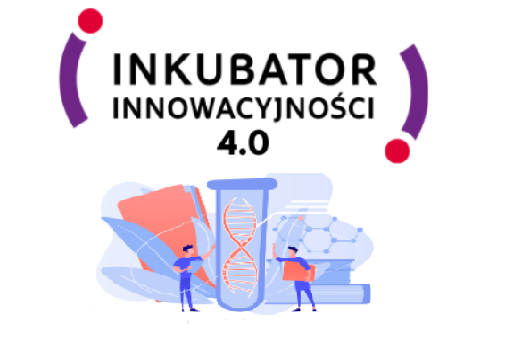
Project Number: MNiSW/2020/346/DIR
Project implemented as part of the “Innovation Incubator 4.0” programme
Title of the project: Synthesis of branched systems with a tannin core for applications as key components of antibacterial and antifouling polymer coatings
Principal Investigator: Prof. Paweł Chmielarz, Eng, PhD, DSc, ProfTit
Project Value: 55 000,00 PLN net
Financing with resources of Ministry of Science and Education, Poland
The project is implemented under the program of the Ministry of Science and Education from European funds as part of the non-competition project entitled “Support for the management of scientific research and commercialization of R&D results in research units and enterprises” under the Intelligent Development Operational Program 2014–2020.
Aim of the Project:
The main objective of the project is the synthesis of antifouling and antibacterial polymer materials in the form of star polymers with a tannic acid core using the metal-free ATRP technique in water with a fully biocompatible and economical photoinitiation system - riboflavin (vitamin B2)/ascorbic acid (vitamin C).
The resulting innovative product has potential application as a key component of ecological antifouling and antibacterial paint coatings. An important aspect in the context of paint coatings is also the partial modification of the hydroxyl groups in the structure of tannic acid.


Project Number: SKN/SP/496557/2021
Project implemented as part of the "Student science clubs create innovation" financed by the Ministry of Science and Education
Title of the project: SI-ATRP in the synthesis of functional polymer brushes grafted from flat surfaces
Principal Investigator: Prof. Paweł Chmielarz, Eng, PhD, DSc, ProfTit
Project Value: 67 135,00 PLN
Financing with resources of Ministry of Science and Education, Poland
Aim of the Project:
The main aim of the project is the synthesis of new, functional polymer materials via surface-initiated radical atomic polymerization (SI-ATRP) methods. The innovative nature of the project assumes the synthesis and characterization of macromolecular compounds and polymer brushes with extensive architecture as well as the optimization of ATRP techniques based on the 12 principles of green chemistry. Due to the wide interest and the number of members of the Student and Doctoral Scientific Society of Chemical and Pharmaceutical Engineering "IPSUM", the project has been divided into 3 parts and includes activities focused on obtaining hybrid materials with potential application in microelectronics (modification of silicon nanoparticles) or implantology (modification of polyetheretherketone) and for biomedical applications, including as carriers of active substances (lignin modification).
![]()
![]()
Project Number: UMO-2020/38/E/ST4/00046
Project implemented as part of the SONATA BIS 10 programme
Title of the project: Vitamin B2 as an effective initiator, photoactivator and oxygen scavenger in cost-effective and simplified synthesis of advanced polymer materials by ATRP techniques
Project Promoter: Rzeszow University of Technology, Faculty of Chemistry (Leader), Jagiellonian University, Faculty of Chemistry (Consortium member)
Principal Investigator: Prof. Paweł Chmielarz, Eng, PhD, DSc, ProfTit
Project Value: 1 669 540,00 PLN
Financing with resources of National Science Centre, Poland
Aim of the Project:
In response to “green chemistry” issue a widespread biomolecule – vitamin B2 was selected to serve as a universal and cheap driving force for the synthesis of various polymers by means of variations of ATRP methods. Therefore, the main goal of the project is the investigation of riboflavin (vitamin B2) as a naturally-derived substrate to create a multifunctional molecule playing a few roles simultaneously in the polymerization process, namely as an initiator, photoactivator and oxygen scavenger in the preparation of functional polymer materials with advanced architectures such as polymer brushes, copolymers and polymer stars.
The project is composed of two main concepts. The first one includes an investigation of riboflavin and modified riboflavin as an efficient photoactivator in surface-initiated metal-free atom transfer radical polymerization (rib-SI-metal-free-ATRP). It is expected that the application of “grafting from” methodology will provide an insight into the polymerization mechanism and initiation selectivity. It is planned to design a special reaction setup for rib-SI-metal-free-ATRP in microliter volumes to synthesize advanced polymeric architectures such as homopolymer, copolymer and gradient polymer brushes on flat surfaces. Such miniaturization may help to develop as a cost-effective method for synthesis of functional coatings where only 10-15 μl of polymerization solution will be used to functionalize 1 cm2 of the inorganic surface.
The other concept includes the use of brominated riboflavin as an amphiphilic ATRP initiator and the function of the unmodified isoalloxazine ring of riboflavin molecule in different ways. The main aim is to study the kinetics of various ATRP techniques in terms of a synthesis of the new types of functional brush-like polymers with riboflavin core and poly(meth)acrylates side chains. The initiation functionality of brominated riboflavin will be tested in externally controlled techniques, i.e. simplified electrochemically-mediated ATRP (seATRP) and ultrasound-mediated ATRP (sono-ATRP) with parts per million (ppm) level of catalyst, and photoinduced ATRP with complete elimination of transition metal complex (metal-free ATRP). The main goal of this part is the use of biphasic conditions by using miniemulsion as a reaction medium, polymerizing both hydrophilic and hydrophobic monomer from the amphiphilic initiator, simultaneously, in open-to-air conditions. Moreover, an amphiphilic initiator may allow reduction or complete elimination of additional surfactant in reaction setup. In riboflavin-mediated metal-free-ATRP, the prepared brominated molecule will be examined simultaneously as an amphiphilic initiator and photoactivator, avoiding the use of a transition metal complex.
The project will allow creating the miniemulsion reaction setup with only the riboflavin-based molecule, monomer, and water as a solvent for simultaneous polymerization of two different monomers leading to multicomponent polymers (e.g. zwitterion molecule, pH- and temperature responsiveness in one structure, etc.). The successful project implementation will help to better understand the mechanism of ATRP techniques mediated by riboflavin as a multifunctional molecule for receiving various functional polymeric materials that are in the field of interest of the broad scientific community. It will deliver a facile, selective, oxygen tolerant, and cost-effective method for both modification of various large area surfaces with functional polymers, and preparation polymers with complex architecture.

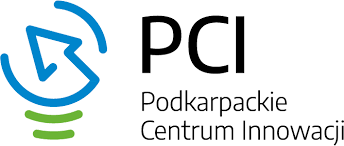
Project Number: 36/PRZ/1/DG/PCI/2020
Project implemented as part of the PCI grant program entitled "Podkarpackie Innovation Center"
Title of the project: Synthesis of hydrophobic and antibacterial ecological varnish coatings
Principal Investigator: Prof. Paweł Chmielarz, Eng, PhD, DSc, ProfTit
Project Value: 199 883,53 PLN
Co-financing of the Project from European Regional Development Fund under Priority Axis No. I "Competitive and innovative economy" from the Regional Operational Program of the Podkarpackie Province for 2014-2020
Aim of the Project:
The subject of the project is the synthesis of hydrophobic and antibacterial varnish coatings based on the structure of naturally-derived structures and methacrylic monomers using atom transfer radical polymerization technique with the regeneration of activators by a chemical reducing agent (ARGET ATRP). Another ecological aspect of this project is the reaction medium of conducted syntheses, namely the dispersion system – a miniemulsion, that enables the polymerization of hydrophobic monomers while eliminating the organic solvent from the reaction system.
![]()
![]()
Project Number: 2020/37/N/ST4/01991
Project implemented as part of the PRELUDIUM 19 programme
Title of the project: Synthesis of troxerutin-inspired brush-shaped polymers through ATRP methods with diminished catalyst concentration
Principal Investigator: Dr. Izabela Zaborniak, Eng, PhD
Project supervisor: Prof. Paweł Chmielarz, Eng, PhD, DSc, ProfTit
Project Value: 209 999,00 PLN
Financing with resources of National Science Centre, Poland
Aim of the Project:
Atom transfer radical polymerization (ATRP) is a process belonging to the versatile reversible deactivation radical polymerization (RDRP) procedures. The essence of ATRP is formation of an equilibrium between a low concentration propagating radicals and a larger number of dormant species. Compared to conventional free radical polymerization the step of radical generation is reversible and occurs by a dynamic redox mechanism. Furthermore, polymers and biopolymers prepared by ATRP are characterized by narrow molecular weight distributions (MWDs) and control over molecular weights (MWs). Moreover it allows site incorporation of functionalities and preparation of well-defined hybrid composites. This technique has had a significant impact on the development of various branches in biotechnology, mostly because of its extensive applications in the preparation of biomaterials based on polymers. The use of ATRP makes it possible to control polymer topology and obtain various structures, ranging from linear chains, stars, cycles, combs and brushes, up to regular networks. This technique also allows preparation of polymers with controlled composition such as block, graft, gradient and periodic copolymers. The main disadvantage of the initially developed “normal” ATRP was the use of a relatively high concentration of catalyst, often between 1000-10000 ppm, calculated as the molar ratio of catalyst complex to monomer. Consequently, extensive purification was required, which generates higher process costs for the products. Initially, a high concentration of activator complex was necessary to overcome the increase in concentration of deactivator due to the termination reactions, which led to a slow-down in the rate of the reaction. This problem was resolved by the development of new ATRP methods based on activator regeneration, which allow for significantly diminished concentrations of the catalyst, down to 100 ppm or less. In these methods creation of an additional redox cycle regenerates the activator by reduction of the deactivator. The headline aim of the research project is the optimization of the synthesis of novel naturally-derived stimuli-responsive polymer brushes using low ppm ATRP techniques based on continuous regeneration of catalyst complex, starting from supplemental activation reducing agent (SARA) ATRP utilizing copper as a reducing agent in organic solvent, moving to more environmentally friendly reaction medium – miniemulsion, using activator regeneration by electron transfer (ARGET) ATRP and external stimuli to regenerate catalytic complex, including ultrasonication-induced ATRP (sono-ATRP) in which, under the ultrasonic waves in the aqueous environment, hydroxyl radicals are created constituting the factor leading to the regeneration of Cu (I), without necessity of introducing any additional chemical compound making this technique extremely pure in context to current art of state in low ppm ATRP techniques. The realisation of the project in particular relies on kinetic analysis of the electrochemical catalytic process (EC’) during reduction of the regenerated CuIIBr2/TPMA in the presence of the received ATRP troxerutin-based macroinitiator (Trox-Br10) and subsequently detailed cognition of mechanism and kinetics of polymerization processes with the use of that brominated macromolecule. An another significant aspect of the research is also particular comprehension of the mechanism and kinetics of ATRP syntheses determining the reaction rate constants of particular partial reactions and investigation of chemical structure of the obtained polymer brushes. In connection with the innovation nature of the synthesized biopolymer and also providing novel information related to mechanism and kinetics of conducted reactions, the realisation of the presented project will certainly lead to development of important scientific domain such as Polymer, Biopolymer Chemistry being a part of the domain of scientific research ST - Science and Technology. It is assumed that these troxerutin-based brushes will be ensure flow control of substances in and out in connection to significant pH response due to anionic poly(acrylic acid) (PAA) segments and cationic poly(2-dimethylaminoethyl methacrylate) side chains, additionally the macromolecules are nonimmunogenic, nontoxic and biocompatible, which undoubtedly allow for wide potential application in medicine as stimuli-sensitive drug carriers. Taking into account the fact that troxerutin is used as a vasoprotective, this modified structure can improve its activity or be a carrier for this structure.

Project Number: PPI/PRO/2019/1/00044/U/00001
Project implemented as part of the PROM programme
Title of the project: International scholarship exchange of PhD candidates and academic staff
- Synthesis of naturally-derived polymers with different architecture via low ppm atom transfer radical polymerization (ATRP) techniques
- Synthesis of poly (tert-butyl acrylate) (PtBA) brushes grafted from the surface of silicon wafers using the sono-ATRP technique in miniemulsion
Principal Investigator: Prof. Paweł Chmielarz, Eng, PhD, DSc, ProfTit
Project Value: 44 400,00 PLN
Co-financing of the Project from European Regional Social Fund and Polish National Agency for Academic Exchange
Aim of the Project:
The aim of the project is to create a mechanism of financial support for scholarship exchange of PhD candidates and academic staff programmes. These programmes will enable participation in short forms of education (lasting from 5 to 30 days) which are aimed at increasing competences and qualifications. The project will contribute to the improvement of accessibility of international education programmes and will increase the mobility of the personnel both in the field of visits of representatives of Polish universities and scientific institutions abroad as well as arrivals of scholarship holders to Poland, including people from outside the EU.

Project Number: POIR.04.01.01-00-0002/16-00
Project Promoter: Warsaw University of Technology, Faculty of Chemistry (Leader), Rzeszów University of Technology, Faculty of Chemistry (Consortium member)
Principal Investigator: Prof. Zbigniew Florjańczyk, Eng, PhD, DSc, ProfTit
Project Value: 3 677 784,00 PLN
Co-financing of the Project from European Regional Development Fund under the Smart Growth Operational Programme: 1 838 892,00 PLN
Aim of the Project:
The project will result in the elaboration of a method of manufacturing of four types of products enabling gluing various types of materials (metals, glass, some types of plastics). The basic components of these systems will be polyurethane glues and sealants cured with moisture from the air. In order to achieve joints of good mechanical properties and high resistance to atmospheric factors, a new type of oligomerols containing in their structure carbonate groups and aliphatic?aromatic ester groups derived from waste poly(ethylene therephthalate) will be utilized for the preparation of urethane prepolymers. The aim of further studies will be to change the curing mechanism of prepolymers to eliminate the hydrolysis of isocyanate groups resulting in carbon dioxide evolution causing foaming of joints. One possible solution to this problem is the introduction of silanol groups to the prepolymer structure; in presence of moisture these groups undergo hydrolysis and condensation forming polymer networks. Such type of materials will be also applied as prime coatings capable of chemical bonding with some glued materials. The second solution needed mainly for the preparation of sealants involves the use of reactive solvents, which in reaction with moisture will generate functional groups reacting with isocyanate groups of prepolymers without CO2 evolution. To assure the appropriate rheological conditions and improved chemical resistance and other functional parameters, the urethane prepolymers will be additionally modified with fillers, pigments, surfactants and UV stabilizers.





